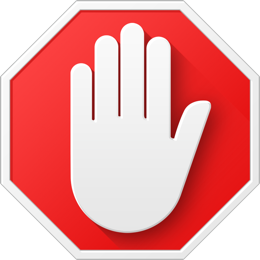Remember when you were a kid and your parents would try multiple tricks to get you to eat your vegetables?? I sure do. Especially spinich! I would scrunch up my face and she would say "it's not going to kill you!"
Well, mom, I hate to be the bearer of bad news but...
Canadians warned to avoid bagged U.S. spinach
15/09/2006 6:44:25 PM
Contaminated bagged spinach blamed for one death and making hundreds of other people sick in the United States has been traced to a California natural foods company.
Natural Selection Foods in San Juan Bautista, Calif. is recalling bagged spinach products sold under almost three dozen names.
The U.S. Food and Drug Administration (USFDA) reported Thursday that an outbreak of E. coli illnesses in the U.S. was associated with bagged, fresh spinach.
Federal Drug and Administration officials said late Friday that patients helped establish a link with products from the California company by telling investigators what they ate before getting sick.
But the warning not to eat any bagged spinach remains in place, and the investigation continues, because recalls from more than one company may still be required.
Alarm over the E. coli outbreak spread to Canada Friday, as officials warned Canadians not to eat bagged fresh spinach imported from the U.S.
An advisory issued by the Canadian Food Inspection Agency (CFIA) Friday warned Canadians not to eat bagged spinach from the United States until further notice.
Officials warned that washing produce won't kill the bacteria, although cooking can.
Canadian food inspection officials said that Canadian spinach is still safe to eat. The warning applies only to U.S. spinach. Other bagged salads are not considered affected.
"The best advice to the consumer is ... look at the bag, and if it's marked Produce of U.S., I would recommend not to eat it," Rene Cardinal, director for fresh fruits and vegetables at the Canadian Food Inspection Agency, told CTV Newsnet.
Some packaged spinach might also carry a label that says "Product of U.S." If the label appears ambiguous, ask your store.
The U.S. outbreak was originally reported in eight states on Thursday. By Friday, the Centers for Disease Control and Prevention said it had grown to include 20 states: California, Connecticut, Idaho, Indiana, Kentucky, Maine, Michigan, Minnesota, New Mexico, Nevada, New York, Ohio, Oregon, Pennsylvania, Tennessee, Utah, Virginia, Washington, Wisconsin and Wyoming.
The agency added that 29 people have been hospitalized, 14 of them with kidney failure.
Because the outbreak is so widespread, U.S. health officials have been unable to trace where the tainted spinach came from. At this time of year, most of the crop comes from California. But contamination can occur at many stages, including packaging.
"Normally we advise the public and do a recall on a specific product," Cardinal said. "But the U.S. has not targeted a specific brand name or a one specific company there are potentially several sources."
The warning remains in place until the source of the problem is identified and the company or companies involved have resolved the problem.
E. coli is commonly found in animal manure. This particular form, E. coli O157:H7, first surfaced in 1982 and was considered responsible for 73,000 infections and 61 deaths, said the Centers for Disease Control.
The Public Health Agency of Canada (PHAC) said that no cases linked to the current outbreak have been reported in Canada. But spinach imported from the U.S. is widely available in Canadian stores.
Canadian officials have informed the Canadian Produce Marketing Association, and retailers will be advised to pull U.S. fresh spinach from store shelves.
Anyone who gets sick after eating spinach should contact their doctor immediately. Symptoms to watch for include diarrhea and bloody stools.
Although healthy adults sickened by E. coli usually get better after a week, people with poor health, the very young and the elderly can develop kidney failure, which can lead to death.
In a statement, Natural Selection Foods LLC said it was co-operating with health officials to identify the source of the contamination. The affected packages have "Best if Used by Dates" of Aug. 17 through Oct. 1.
Tainted brands identified so far include:
With files from The Canadian Press
A quick word on blocking ads

It looks like you are using an ad blocker. That's okay. Who doesn't? But without advertising revenue, we can't keep making this site awesome. Click the link below for instructions on disabling adblock.






























